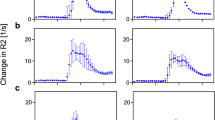Abstract
Numerous experimental and clinical studies have shown that the use of the high relaxivity MR contrast agent MultiHance (gadobenate dimeglumine, Gd-BOPTA; Bracco Imaging, Milan, Italy) results in improved detection, delineation and enhancement of CNS tumors compared to other available gadolinium agents. This leads not only to more confident diagnoses, but also to a substantially improved differential diagnostic process. The higher R1 and R2 relaxivities of MultiHance, deriving from the weak and transient interaction of the Gd- BOPTA contrast-effective moiety of this agent with serum albumin, help also to further optimize functional MR imaging techniques such as perfusion MRI and dynamic MR angiography. However, because the interaction between the Gd-BOPTA chelate and serum albumin affects proton relaxation times, imaging parameters need to be adapted to achieve maximum benefit from the high relaxivity of MultiHance at different magnetic field strengths. In this article we review the unique MR imaging properties of Multi- Hance for the assessment of brain tumors and other cerebral pathologies, and give practical information on how best to optimize MR sequence parameters to achieve the optimal contrast between normal CNS tissue and lesion.
Similar content being viewed by others
Author information
Authors and Affiliations
Corresponding author
Rights and permissions
About this article
Cite this article
Essig, M. Protocol design for high relaxivity contrast agents in MR imaging of the CNS. Eur Radiol Suppl 16 (Suppl 7), M3–M7 (2006). https://doi.org/10.1007/s10406-006-0190-5
Issue Date:
DOI: https://doi.org/10.1007/s10406-006-0190-5




